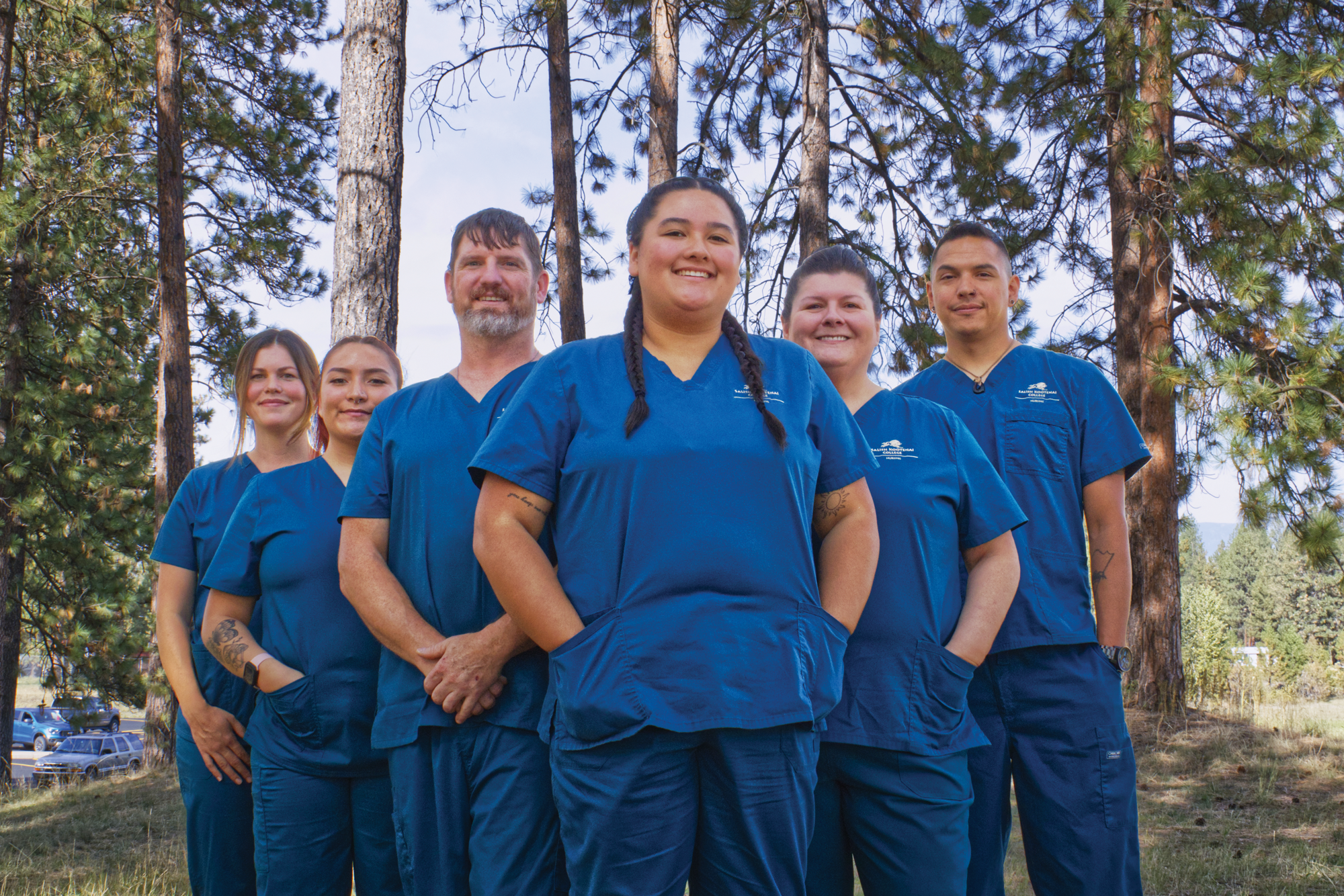Indigenous nursing programs are making room for new perspectives
When Angela Acuna, BSN, RN, heard about the Indians in Nursing: Career Advancement and Transition Scholars (INCATS) program, she thought it was too good to be true.
She was in her first semester at the University of Arizona College of Nursing in Tucson and was one of just a few Native American students in the program.
“To be honest, I felt lost,” said Acuna, a member of the Tohono O’Odham Nation of Arizona. “I was an older student, and a minority, and I didn’t have anyone to relate to.”
Understanding and honoring the needs of Native American elders
The Center for Indigenous Nursing Research for Health Equity
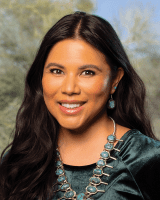

That changed when the then-director of INCATS brought Acuna into her office and told her she was eligible for the new program, funded by a 5-year grant from the Indian Health Service (IHS) in 2019. INCATS provided Acuna with not only financial support to cover tuition, fees, and living expenses, but also offered culturally relevant peer and faculty mentoring, professional skills development, preparation for RN licensure or APRN certification, and job placement. And, perhaps most essentially, a community of Native American nursing students to bond with.
Meeting vital needs
Just 0.4% of RNs identify as American Indian or Alaska Native, according to the 2022 National Nursing Workforce Survey.
“The data speaks for itself—the nursing workforce doesn’t reflect our patient population,” said Megan Christiansen, PHN, MSN, RN, director of the Niganawenimaanaanig (ni-gah-nah-when-nee-mah-nah-neg) Indigenous Nursing Program at Bemidji State University in Bemidji, MN. “In Beltrami County, where we are, close to 25% of our population is American Indian and we have a very small representation of that population in our nursing workforce.”
Several reasons account for the lack of Indigenous nurses. The typical nursing school experience may not appeal to Native American students. Many are “non-traditional,” meaning they’re often older, might be parents, and need to work full- or part-time while in school. And some may not wish to be far from their families and communities for the time it takes to earn a nursing degree.
Niganawenimaanaanig, an Ojibwe word interpreted as “we take care of them,” was founded at Bemidji State in 2017 by Misty Wilkie, PhD, RN, FAAN, a member of the Turtle Mountain Band of Chippewa/Métis and one of fewer than 20 PhD-prepared Native American nurses in the United States. Funded by the U.S. Department of Health Resources and Human Services’ Nursing Workforce Diversity program, Niganawenimaanaanig provides a supportive community for Indigenous nursing students, focused on their academic, cultural, financial, and social well-being.
Niganawenimaanaanig employs Tessa Reed as a full-time student mentor, who meets with each student at least once a week for 30 minutes, in person or via Zoom.
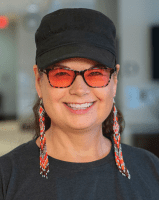

“What I do mostly is listen,” said Reed, who is Anishinaabe, a citizen of the Sault Ste. Marie Tribe of Chippewa Indians, and of Waganakising Odawa descent. She looks for “red flags,” indications that a student is struggling, and connects them to resources like financial aid, mental healthcare, and academic assistance. She also helps students connect with their cultural heritage if they wish to do so.
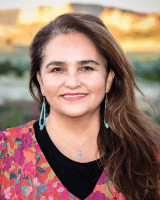

“In the academic setting, creating culturally safe spaces is a really important factor for student success,” said Kahn-John, an Arizona Nurses Association member who is now a research associate at the Johns Hopkins School of Nursing in Baltimore.
Culturally and professionally relevant education
Salish Kootenai College, based in Pablo, MT, is a tribal college, serving the Bitterroot Salish, Kootenai, and Pend d’Oreilles tribes. Its main campus is on the Flathead Reservation. The college, which originally offered only an associate nursing degree program, started a direct admit BSN program in the fall of 2020 to better prepare students for the job market. In making this change, Lisa Harmon, PhD, RN, chair of the college’s nursing department, sought direction from the nursing program’s Community Advisory Committee, which includes many IHS nurse managers.
“The committee said yes, IHS wants nurses to be bachelor-prepared and they also recommended a Native-oriented curriculum, not just for Native nurses, but for non-Native nurses to know how to deliver culturally congruent care to Native patients,” said Harmon, an ANA member.
“We weave Native American culture through all of our courses, and some courses are specifically Native-American oriented in their entirety, like
Diabetes Type 2, Issues in American Indian Health, and Culture and Caring,” said Harmon.
The curriculum also is designed to prepare generalists, Harmon said, “Because many of these IHS facilities are on remote reservations and the nurses there do everything—they deliver babies, run diabetes clinics and well-baby clinics, work in the emergency department, anything that’s needed.”
INCATS’ Godfrey, who grew up and earned her nursing degree in Utah, was excited to work in Arizona, home to 22 federally recognized tribal nations. “I thought, ‘We’re on the land of Indigenous people; we can incorporate Indigenous health into how we teach advanced clinical practice’,” she said. Both Godfrey and Kahn-John emphasize the importance of Hózhó, the “complex wellness philosophy and belief system of the Diné (Navajo) people, comprised of principles that guide one’s thoughts, actions, behaviors, and speech,” as defined by Kahn-John and Koithan in 2015.
“In our culture, we believe in the interconnectedness between us, each other, and the land and sky. We all have a relationship,” said Godfrey. “By incorporating Hózhó into the INCATS program, our goal is to cultivate beauty and harmony in those relationships and create scholars and nurses who have the highest quality care delivery skills and are also well-rounded people with a strong spirit.”
The nursing department at Bemidji State offers American Indian Health Issues and Nursing as an elective option for students. Beginning in the fall of 2024, all Bemidji State University students must successfully complete a course in its new Nisidotaading program prior to graduation. The courses are meant to help students develop an understanding of Indigenous peoples, cultures, and issues.
Welcoming environment
In addition to providing high-quality, culturally congruent education, the programs also meet the spiritual and community needs of their native students.
Salish Kootenai’s nursing program is cohort-based, with fall-only admission, so students go through the program with the class they started with.
“I like to say it’s a relationship-based program,” said Harmon. “The classes are small, and the faculty is very hands-on. We eat lunch with the students. While respecting boundaries, we are all in it together.”
Although most Niganawenimaanaanig students are currently attending classes online, the campus has a lounge where Indigenous nursing students can relax, study, and spend time with each other. Bemidji students have a safe place to smudge, a practice in which sacred herbs or resins are burned as part of a healing or purification ceremony. Salish Kootenai also has a smudging room on campus.
After graduation
The Salish Kootenai nursing program isn’t funded by IHS, but many of its tribal students have IHS scholarships, which require a “pay-back” of working 1 year for every 1 year of IHS funding, with a minimum of 2 years employment required as an RN in a direct patient care role at a tribal or IHS setting. Students who graduate from the INCATS program have the same requirement. Although the payback is required, most Indigenous students are eager to work in tribal settings.
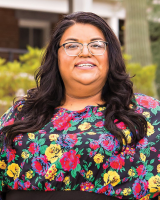

The requirement was one of the things that drew University of Arizona student Angela Acuna to INCATS. “That was really enticing, because I wasn’t sure about my post-graduation plans, but I knew I wanted to work in the Tohono O’odham Nation or in the Native community,” she said.
“We know that outcomes are going to be more positive when [a nurse is] taking care of people that they can relate to,” she said. “When nurses have shared backgrounds, shared values, and shared cultural components, they’re able to better serve the populations in our area.”
Raising the bar for nursing education
The INCATS, Niganawenimaanaanig, and Salish Kootenai nursing programs are welcoming non-traditional students and helping shape them into highly qualified, versatile nurses with culturally congruent care skills and a deep understanding of Indigenous communities.
“The Niganawenimaanaanig program really allows us to be intentional about supporting Indigenous students,” Christiansen said. “We need to be deliberate about finding ways to support students, looking for policies to be more inclusive, and actively look for ways to increase diversity in order to improve patient care and the health of our communities.”
— Elizabeth Moore is a content creator at the American Nurses Association
American Nurse Journal. 2023; 18(11). Doi: 10.51256/ANJ112332
Reference
Kahn-John Diné M, Koithan M. Living in health, harmony, and beauty: The Diné (Navajo) Hózhó wellness philosophy. Glob Adv Health Med. 2015;4(3):24-30. doi:10.7453/gahmj.2015.044
Resource
The mission of the Minority Fellowship Program (MFP) at ANA is to increase the number of rigorously educated psychiatric and behavioral health nurses from under-represented ethnic minority groups. Learn more at emfp.org.

